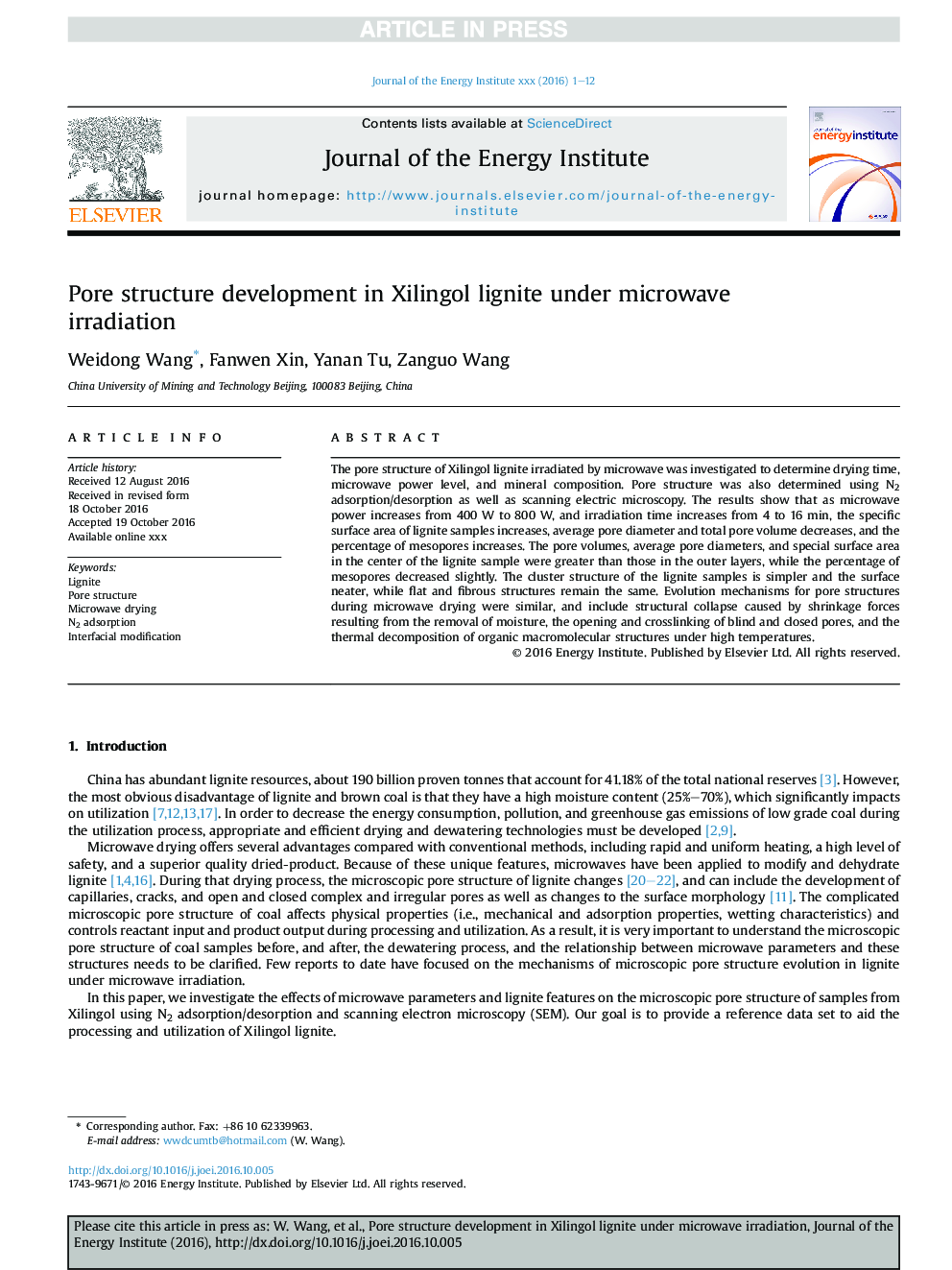| Article ID | Journal | Published Year | Pages | File Type |
|---|---|---|---|---|
| 8108741 | Journal of the Energy Institute | 2018 | 12 Pages |
Abstract
The pore structure of Xilingol lignite irradiated by microwave was investigated to determine drying time, microwave power level, and mineral composition. Pore structure was also determined using N2 adsorption/desorption as well as scanning electric microscopy. The results show that as microwave power increases from 400Â W to 800Â W, and irradiation time increases from 4 to 16Â min, the specific surface area of lignite samples increases, average pore diameter and total pore volume decreases, and the percentage of mesopores increases. The pore volumes, average pore diameters, and special surface area in the center of the lignite sample were greater than those in the outer layers, while the percentage of mesopores decreased slightly. The cluster structure of the lignite samples is simpler and the surface neater, while flat and fibrous structures remain the same. Evolution mechanisms for pore structures during microwave drying were similar, and include structural collapse caused by shrinkage forces resulting from the removal of moisture, the opening and crosslinking of blind and closed pores, and the thermal decomposition of organic macromolecular structures under high temperatures.
Related Topics
Physical Sciences and Engineering
Energy
Energy Engineering and Power Technology
Authors
Weidong Wang, Fanwen Xin, Yanan Tu, Zanguo Wang,
